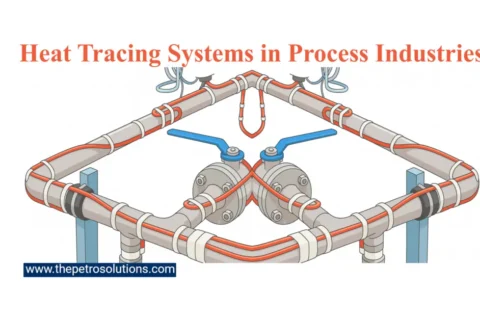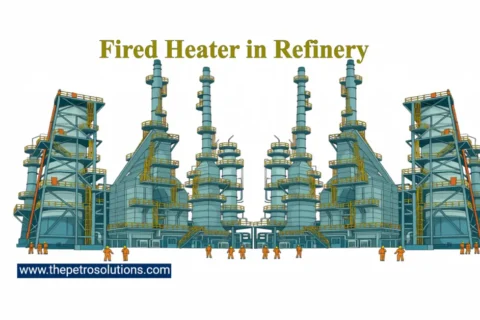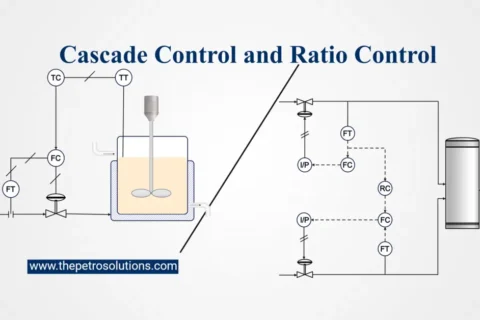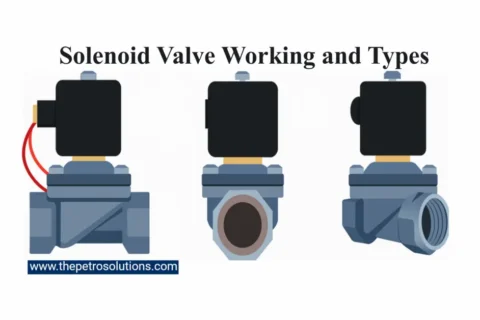Coke formation is the deposition of hydrogen deficient carbonaceous material over the catalyst surface. Generally, it is formed by thermal condensation, de-hydrogenation, and polymerization reactions of hydrocarbons. The coke covers active sites by physical blockage of the entrance to the catalyst pores and reduces the activity of the Hydrotreating catalyst. The coke deposition is a function of time and temperature. The longer the service time of the catalyst or higher the operating temperature, the coking effect will be more severe.
During normal operations, there is a gradual decline of catalyst activity due to coke formation with the rise in reactor temperatures. However, process upsets and abnormal situations may lead to rapid deactivation of the Hydrotreating catalysts.
General methods of measuring the deactivation rate are to estimate, the decline in hydroprocessing reaction rate and high differential pressure across the catalyst bed. The extent of coke formation depends upon several factors like Hydrogen partial pressure, operating conditions, feed-stock properties, product specification requirements, feed contaminants, catalyst structure, and process abnormalities, etc.

Catalyst deactivation caused by coke formation is a temporary poison and can be recovered by applying an in-situ or ex-situ regeneration. Although, catalysts can not be regenerated with 100% activity.
Following are steps to reduce the coking rate over hydrotreating catalyst. The key to reducing coke formation is to apply the best operating skills to have minimal effects on the catalyst in normal and emergency conditions.
1. Hydrogen Partial Pressure
Hydrogen partial pressure is a very critical operating variable to reduce coke formation. High partial pressure can be maintained by improving hydrogen purity, recycle gas flow rate, hydrogen to hydrocarbon ratio, makeup gas flow rate, quench gas flow rate, and system pressure. For further details about Hydrogen partial pressure, please view my previous blog “Improving Hydrogen Partial Pressure in Hydrotreating Units”
2. Operating Parameters
- Reactor temperature should be controlled as minimum as possible (i.e. near SOR) while maintaining required product quality.
- For plant load variation, at first, reduce the reactor temperature before reducing the plant load and increase the temperature after a load has been increased.
- Unnecessary product targets will also cause reactor high temperatures. Pool product Sulfur or Nitrogen should be the target, e.g if the target is 350 ppm Sulfur then DHT Sulfur should be controlled up to 300, rather than 200 or 250 ppm
- Unit feed rate should always be more than the turndown. Low feed rates, results in poor flow distribution or channeling across the catalyst bed. Thus some parts will have low flow rates, high temperature, hence more coke rates. It is better to maintain a high H2 (Hydrogen)/HC (Hydrocarbon) ratio at low feed rates.
- Recycle gas provides hydrogen for reaction and removes the heat of reaction. High gas flow rates minimize coke formation. Always maintain, more than minimum design Hydrogen to Hydrocarbon ratio in the reactor feed.
- LHSV, liquid hourly space velocity is the ratio of the rate of liquid flow to the catalyst volume. It should always be more than a minimum recommended figure. Low LHSV will cause high residence time in a reactor and a high coke rate. High LHSV will require high temperature for processing the liquid, as a result, a high coking rate. It should be between the operating design.
- Hydrogen purity should always be maintained as high as possible. Impure gas, will not provide hydrogen for a reaction at some spaces of the catalyst thus resulting in coke formation and adverse effects of catalyst activity.
- Wash water is injected into the cool reactor effluent to remove Chloride, Ammonia, and H2S in the form of salts. If sufficient wash water cannot be maintained or even stopped then Ammonia will be accumulated in the recycle gas and suppress the catalyst activity. The unit should be down if continue injection of wash water is not possible.
- Tripping of Amine scrubber will cause accumulation of H2S in the recycle gas, thus low purity of recycle gas has adverse effects on the activity of the catalyst.
- Apply all the methods to limit H2S in the system. The high concentration of H2S in the reactor will push the equilibrium towards the reactants. In addition, H2S blocks the active sites of the catalyst thus decreasing the HDS activity.
3. Feed Stock Properties
- Feedstock containing more contaminants will cause a fast coke rate because of severe reactions required to achieve the desired product specifications. For example, high Sulfur in feed requires a high temperature to complete the Desulfurization reactions, so a high coke rate.
- A freshly sulfided catalyst is super active and utilization of cracked stock may lay down the permanent scale or coke on the catalyst. Do not use cracked socks after sulfiding, for at least three days preferably for 07 days.
- Operate the unit within the design boiling range of feed. Heavier feeds contain more impurities like Nitrogen, Sulfur, and metal contents. Its treatment will require severe reaction conditions to produce the required product quality which will increase the coke laydown over the catalysts. Regularly, check the feed quality adjust from the upstream unit to have a reduced effect on the hydrotreating catalyst.

4. Catalyst Exposure to High Temperature
Sudden catalyst exposure to very high temperatures may cause a laydown of a high concentration of carbon over the catalyst surface. In severe cases, might sinter or agglomerate the catalyst and may lead to permanent activity loss.
- To avoid temperature runaway or excursion, strictly follow the temperature runaway operating procedure. If the operator observes any temperature surge, cut the heat source and liquid feed to the reactor. Further, emergency depressurize and purge the system with Nitrogen.
- Freshly sulfided catalysts are super active and minor carelessness may cause the temperature to run away.
For further information, discussion and queries please comment in the box below or contact at admin@ or follow us on Facebook & LinkedIn.






11 thoughts on “Reducing Coke Formation on Hydrotreating Catalysts”
Feed stock affect parameters good and i read first time all in one , but it is not added in graph
Aoa
Sir very good effort and very informative
Please explain difference between in_situ
And ex_situ.
Thanks
Dear Rizwan thanks for your comments.
Ex-Situ means outside, off-site, or away from the plant site. If the catalyst is regenerated away from the plant at some other location or another site built for catalyst regeneration. This regeneration is called ex-situ regeneration of the catalyst.
On the other hand, in-situ means on-site, locally, or at the same location. If the catalyst is regenerated at the same site or the same location where it has been consumed, is called in situ regeneration. Hope you get the answer.
Thanks for sharing.
Why additives added to diesel for conductivity?
Thanks for sharing.
Why additives added to diesel for conductivity?